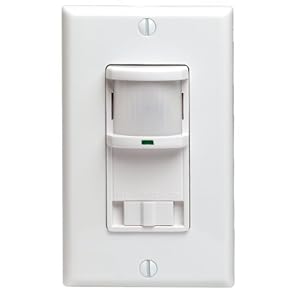Not surprisingly, the greatest portion of lamps is installed in the residential and commercial building sectors.
Residential Market
The residential sector, including 113 million buildings, uses 5.8 billion lamps operating an average 1.8 hours per day.
Average lamp efficacy increased from 45 to 58 lumens per watt between 2001 and 2010, indicating a trend to higher efficiency driven primarily by market preference, commercial building codes and new energy regulations.
In the residential market, which added 1.2 billion lamps between 2001 and 2010, a major technology shift from incandescent to compact fluorescent resulted in a decrease in lighting energy consumption from 208 to 175 terawatt-hours.The share of incandescent lamps fell from 79 percent of installed lighting in 2001 to 52 percent in 2010.
Compact fluorescent lamps increased from 2 to 19 percent in 2010—with one CFL in operation for every two incandescent A-lamps—contributing to a reduction in average lamp wattage from 63 to 46 watts and an increase in average lamp efficacy from 17 to 19 LPW. Dimmers control 12 percent of lamps—nearly 700 million—according to the Department of Energy.
Commercial Market
In the commercial market, which added about 100 million lamps between 2001 and 2010, a major technology shift from linear fluorescent T-12 to T-8 and T-5 resulted in a decrease in lighting energy consumption.
The commercial sector, including 5.5 million buildings with 81.2 billion square feet of floor space, uses 2.1 billion lamps operating an average 11.2 hours per day.
The share of T-8 lamps increased from about 33 percent in 2001 to 61.6 percent in 2010—while T-5 lamps increased to 6.3 percent, and T-12 lamps decreased to 31.3 percent—resulting in a reduction in average lamp wattage from 56 to 42W and an increase in average lamp efficacy from 51 to 70 LPW.
As various regulations eliminated a majority of magnetic T-12 lamp ballasts from the market by 2010 and additional regulation eliminated a majority of linear T-12 lamps in July 2012, the study suggests significant retrofit potential.
According to the Department of Energy, 538 million T-12 lamps were in operation in 2010, including more than 400 million 4-foot lamps. End-users should be looking to upgrade these installations as they and their local distributors exhaust their inventories of T-12 lamps and ballasts.
Lighting Controls
 The study also highlights an opportunity for lighting controls in existing buildings. While commercial building energy codes have made various lighting control strategies commonplace in new construction, the study suggests that:only about 30 percent of all lamps in commercial buildings are controlled.
The study also highlights an opportunity for lighting controls in existing buildings. While commercial building energy codes have made various lighting control strategies commonplace in new construction, the study suggests that:only about 30 percent of all lamps in commercial buildings are controlled.- Dimmers (3%)
- Photo sensors (negligible)
- Occupancy sensors (5%)
- Automatic shutoff systems (4%).
The Future is LED
Interestingly, while LED technology currently enjoys rapid adoption and dominates research and development efforts in the lighting industry, this young technology achieved only a 1 percent share of the total installed lighting base in 2010, even though the total number of LED lamps/installations had increased to nearly 50 million lamps since 2001, or a 3,000 percent increase.
In the commercial and industrial building sectors, about 80 percent of all LED lamps were installed in exit signs, with the remaining lamps—about 7.5 million—installed in display, track, task, area and other applications. In the outdoor sector, LEDs achieved a 3–4 percent share of installed lamps used in roadway and parking lot lighting, while being predominant in traffic signals.
The Department of Energy Predicts that LEDs will continue to improve in price, efficacy and service life, accelerating its trajectory and becoming the dominant light source by 2025, according to the DOE’s 2012 report, “Energy Savings Potential of Solid-State Lighting in General Illumination Applications.”
As a result, the agency expects U.S. lighting energy consumption to be slashed by nearly one-half, saving $250 billion over the next 20 years.
In summary, if LED lighting continues the trajectory toward dramatically higher efficacy and operating life than current technologies, at a competitive cost, it will become the dominant light source, sweeping the market in a remarkably short amount of time.
The future, it seems, belongs to the LED.
Learn More
Lighting Science Group is the world’s leading maker of advanced lighting products. By applying the science of light, the LSG team outperforms the competition and delivers on the promise of LED technology for indoor and outdoor lighting projects. From outer space to major cities and now your home, Lighting Science products and solutions are environmentally friendly, save money and increase energy independence.
“U.S. Lighting Market Characterization Report” contains detailed estimates for the national inventory of installed lamps, offering both insights into how lighting is used as well as opportunities to capitalize on trends.
“Energy Savings Potential of Solid-State Lighting” contains detailed information evaluating the performance and cost of LED technologies and forecasts LED lighting adoption rates through 2030.


